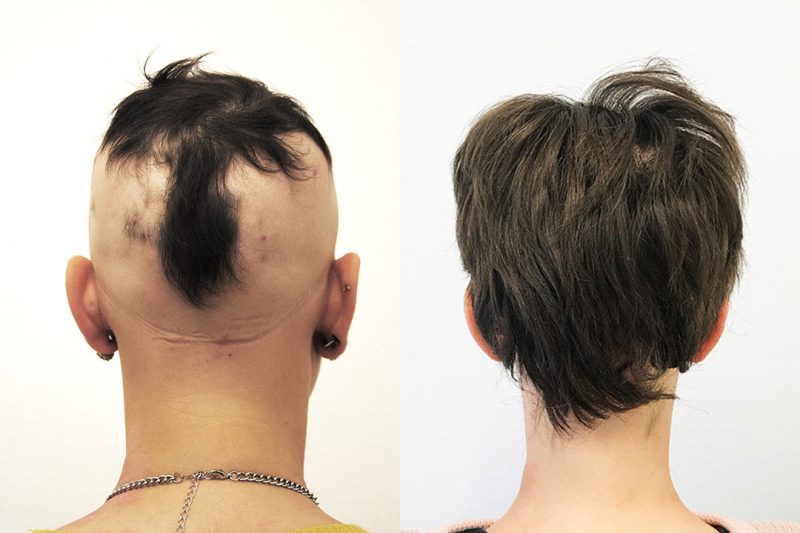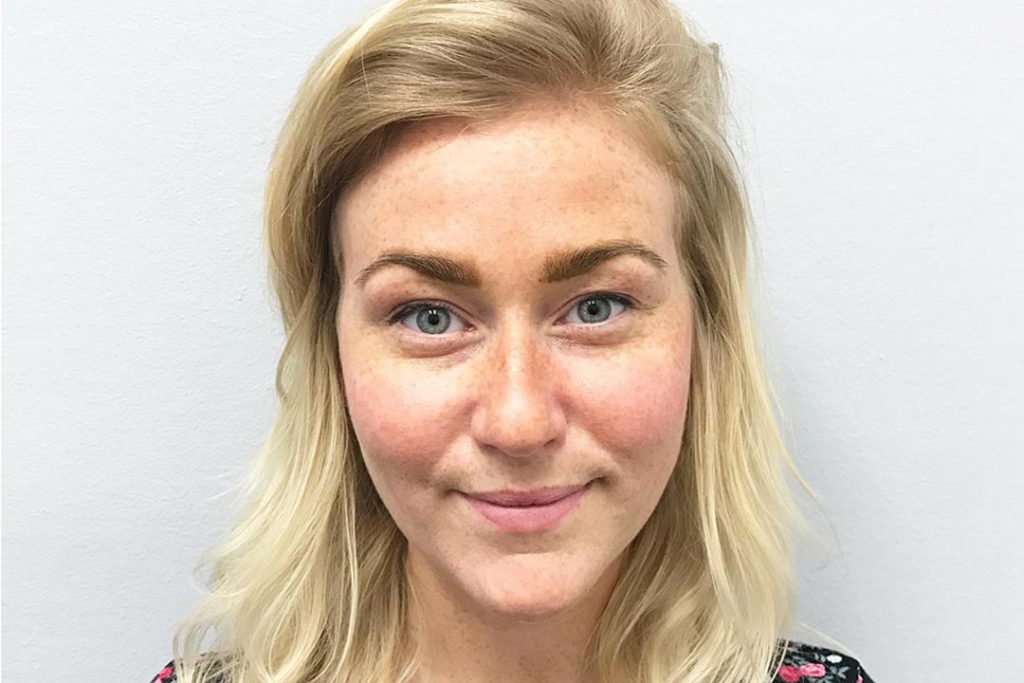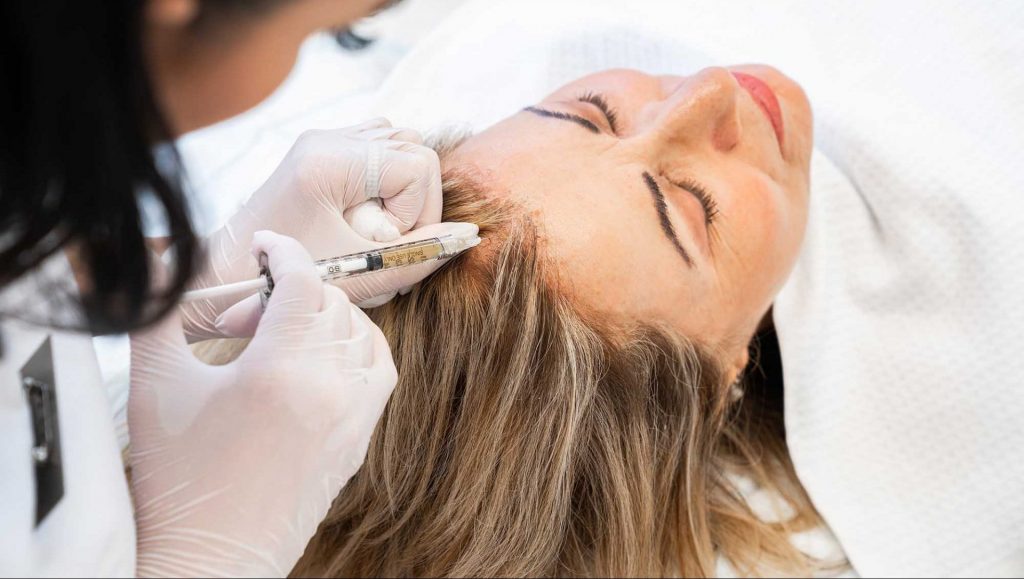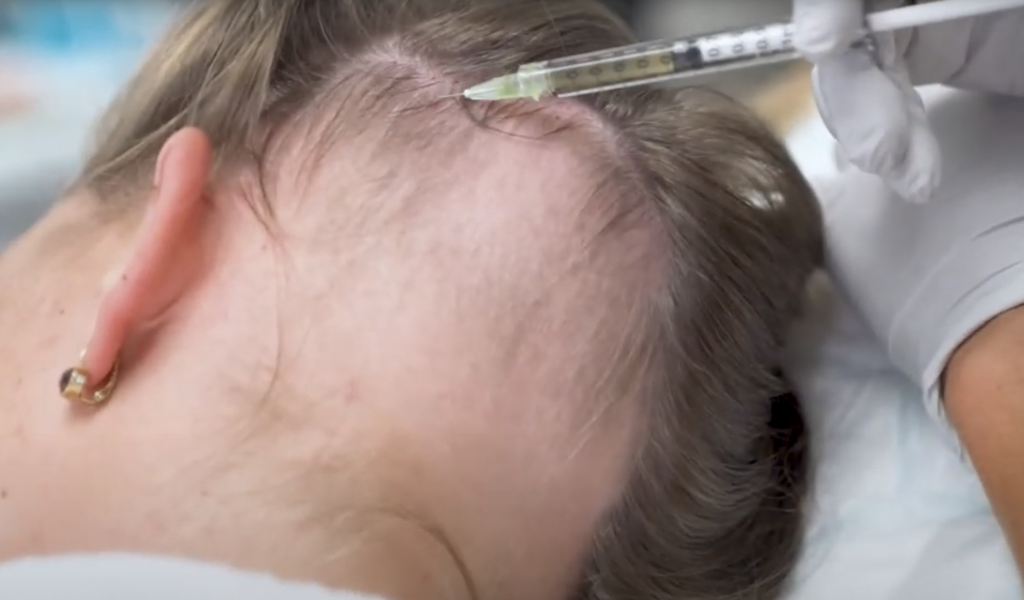
Emma, 23 years old
Unfortunately, it is not only the elderly who suffer from hair loss, young people are also affected. 23-year-old Emma was diagnosed with the hair disease alopecia areata, which causes patchy hair loss.
It started with a bald spot no bigger than a penny which then grew bigger and eventually she was bald on most of the back of her head.
2.5 years ago, Emma got her first bald spot. She discovered it when she scratched her head and realised that no hair was growing on that spot. The patch was about the size of a penny, between 2-3 cm in diameter. At the time, Emma didn’t think it was that bad, although she was shocked by the spot.
The spot Emma had discovered continued to grow, eventually taking up a large part of the back of her head. What Emma thought was lucky was that the spot was in the back of her head, because she has long hair she could hide the spot with.
Treatment with PRP and needle rolls
Emma was looking for a treatment for the bald spot and found out that she has an autoimmune disease called alopecia areata. This is a hair disease in which hair is lost in patches and from which there is no cure.
However, there are ways to trick the body into not having symptoms, such as treatment with PRP and needle rolls.
By treating with PRP and needle rollers, you don’t give the hair disease room to spread.
Through these treatments you can regain your hair, and that’s exactly what Emma has started to do.
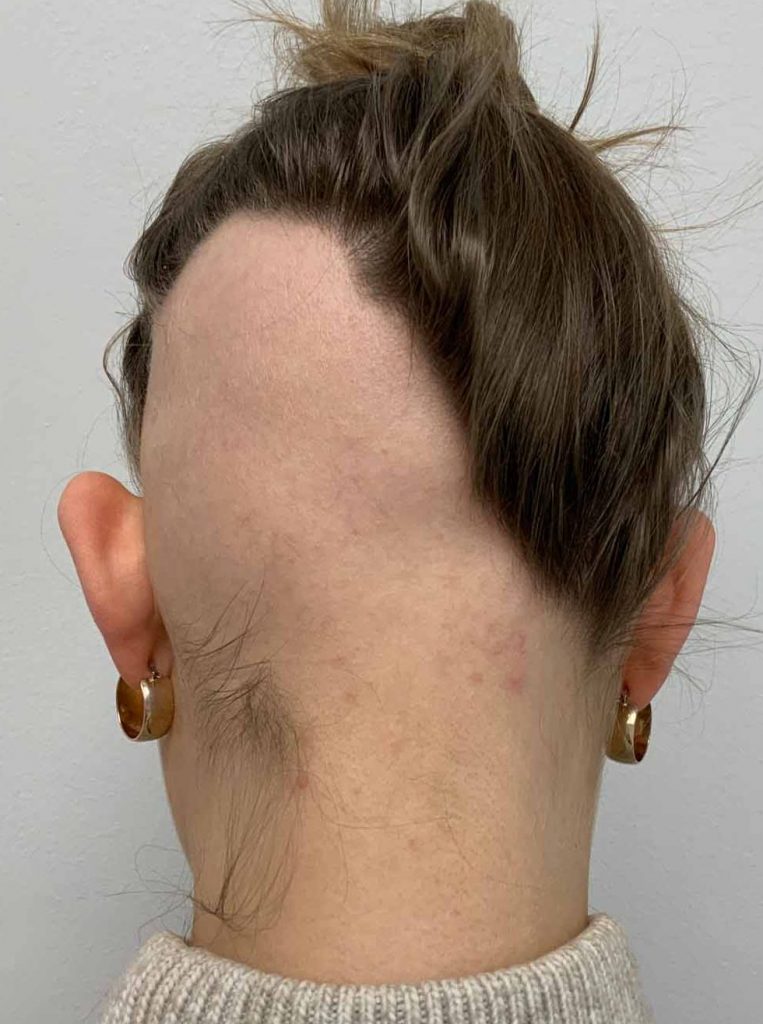
Result
Emma has had 4 treatments with PRP and she has finally started to regain her hair.
She feels good that she is doing something about the bald spot, and that it is getting better and producing results. Emma feels good to have so much hair back.
The before and after pictures are 8 months apart, the first picture was taken in March 2020 and the second in November 2020.
Do you have a bald spot?
If you have alopecia areata like Emma and have just had your first spot, it’s best to start treatment as soon as possible to prevent the spot from spreading.
Even for people who have had their spot for several years, it is important to seek help.
We have treated many people with alopecia areata and have many years of experience with the hair disease.
Book a free consultation and we’ll take a look at your bald spot and see what treatment plan would suit you best.

